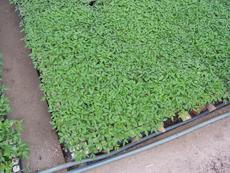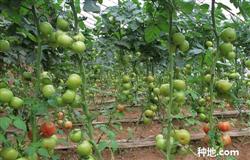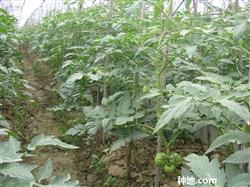How to raise Tomato seedlings

How to raise tomato seedlings? Please introduce how to guide tomato Greenwood cuttage is a way of asexual propagation by using side branches on mature tomato plants that have blossomed and bearing fruit. After nearly three years of practice, it has been realized that there are three major benefits: first, it can save seed investment. Especially for expensive imported varieties, the cost of seed purchase can be greatly saved by using green wood cuttings to raise seedlings. Second, it can shorten the growth cycle. Tomato cuttings come from adult plants that are blooming and fruiting, and have undergone good vegetative growth and flower bud differentiation, and have entered the stage of reproductive growth. compared with sowing and seedling cultivation, the growth process of tomato green wood cuttage is obviously shortened, and the fruit can be put on the market 40-45 days in advance. Third, the output can be greatly increased. Tomato Greenwood cutting seedling cultivation, shorter plant internodes, more inflorescences, round fruit, the yield can be increased by about 10% compared with sowing and seedling cultivation. The main technical points of tomato Greenwood cuttage are as follows: first, select disease-free, robust, intact, 15cm-long lateral branches with 4-5 leaves from the middle and lower part of the adult tomato that has flowered and borne fruit. Second, remove the leaves from the lower part of the branch, then cut the lower end of the branch into a smooth wedge, then treat it with 50mg/kg 's acetic acid solution for 10 minutes, rinse with clean water and set aside. Third, build protective facilities suitable for tomato seedlings in advance, complete the seedling bed, after disinfection, cut the prepared branches according to the row spacing of 12cm × 12cm, deep 5cm, pour enough water after planting, buckle the greenhouse film to ensure that the humidity is not less than 95%. Fourth, the first week after insertion, proper shading to ensure appropriate temperature and humidity. When the humidity is low, spray water to the seedbed in time. The second week, appropriately increase the light, moderate ventilation. If you find slight wilting, you should spray clear water in time. In the third week, the greenhouse film was gradually removed and the seedlings were refined a week before planting. In addition, foliar fertilizer is sprayed once a week after insertion. If the vegetable farmers don't believe it, you can try it. Click to get more tomato planting techniques click to get more vegetable planting techniques
- Prev

How to fertilize Tomato after planting
How to fertilize tomato after planting? As an important vegetable in daily life, tomato is not only delicious and delicious, but also rich in nutrition. However, due to the current defects in planting management, there are a variety of diseases in tomato during the growing period. ...
- Next

How to apply foliar Fertilizer to Tomato
How to apply foliar fertilizer to tomato? Please introduce the guidance of timely foliar spraying of calcium fertilizer, tomato fruit growth needs more calcium, when the soil calcium supply is insufficient, the fruit is prone to navel rot. Therefore, calcium chloride, calcium superphosphate, calcium amino acid and calcium supplementation should be sprayed in tomato fruiting period to meet the need of calcitonin.
Related
- Where is it suitable to grow horseradish in China? it is expected to see the middle altitude horseradish in Alishan.
- How to prevent tomato virus disease reasonably? (Control methods included)
- Many people like to plant towel gourd on the balcony. What are the main points of this method and management?
- What crops can chili peppers be mixed with?
- Fertilization techniques and matters needing attention in Tomato
- What are the grafting techniques for peach seedlings in spring?
- Harm and control methods of root swelling disease of Chinese cabbage
- What are the pests of sweet potatoes? How to prevent and cure it?
- Symptoms, causes and Control methods of navel Rot in Tomato
- The cause of "Cucumber rotten bibcock" in Farmers' planting Cucumber and its Control Plan

